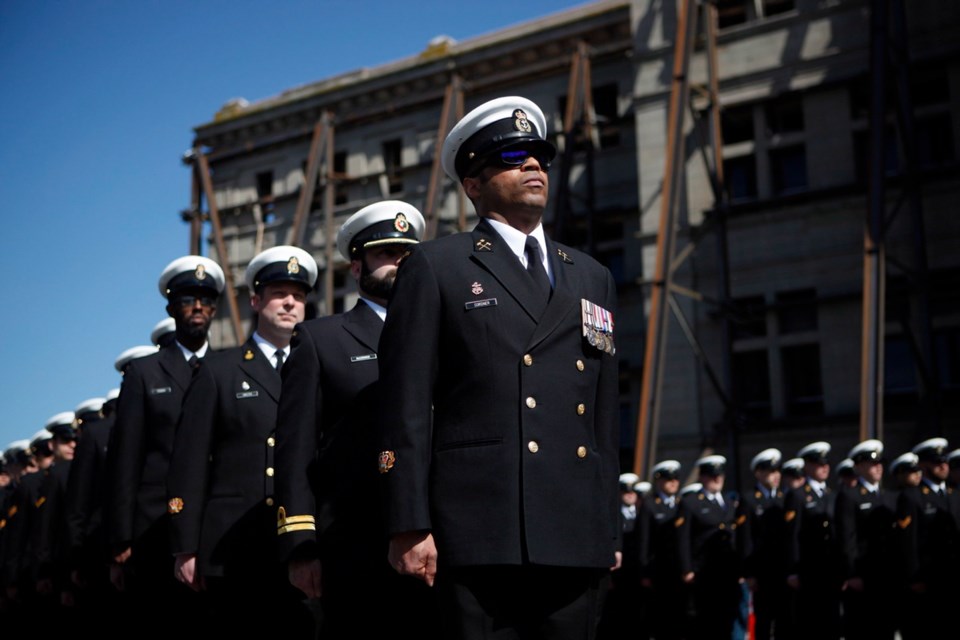Sailors, old, young, upper and lower decks, turned out Sunday to mark the Second World War’s Battle of the Atlantic.
Cadets, veterans and serving members of the Royal Canadian Navy and the Royal Canadian Air Force and even old-time sailors of the merchant navy paraded in remembrance of what is regarded as the longest single action of the war, lasting September 1939 to May 1945.
“It’s good to remember the people who sacrificed,” said 12-year-old Spencer Graham, ordinary seaman and Sea Cadet in an interview at an after-parade celebration at Work Point.
The Battle of the Atlantic is officially marked every year around May 8, the day Second World War hostilities ended in Europe. It’s always a special day for sailors.
The battle refers to the seaborne effort to supply food and materiel to Great Britain and Allied forces fighting Nazis in Europe. It’s an effort that began the day the war started and didn’t end until hostilities ceased in Europe.
On the one side were German U-boat submarines sinking ships with torpedoes. On the other side were the merchant vessels carrying food and supplies, the naval escort ships protecting them in convoys and the crews of aircraft keeping watch over head,
The Royal Canadian Navy lost 33 ships in the fight and in total 2,000 Canadian sailors were killed. A total of 70 Canadian merchant vessels were sunk and 1,700 sailors were killed. And over 900 crews flying Canadian aircraft failed to make it back.
Bob Sears, now 92 and a 28-year veteran of the Royal Canadian Navy, made one run aboard the HMCS Eastview during the Second World War but he went to Murmansk in Russia and not to the U.K.
Sears said he remembers that run mostly for the freezing temperature that iced up his gun every day.
“We were at action stations the whole time and I was on a Bofors [gun] on the port side and I had to get up every morning and chip the ice off it,” he said. “Gee, it was cold.”
But he also remembers when May 8, 1945 came and signalled an end to the Battle of the Atlantic. Eastview was in Halifax and an officer had announced nobody was going ashore until someone could replace him on duty.
“The first guy who came back was an able seaman and he was drunk out of his mind and I just told him ‘You’re on duty,’ ” said Sears.
Serving Master Seaman Daniel Clarke, 37, originally from Saskatchewan and Alberta, said it didn’t take long for him to become steeped in naval lore, like the Battle of the Atlantic.
“I knew something of Canada’s military history and I was always proud of it,” said Clarke. “But once you join and you meet people and get to talk to veterans and it really becomes part of you.”
Rear Admiral Art McDonald, Commander of the Canadian Maritime Forces Pacific, said he may be stationed on Canada’s West Coast but still recognizes the entire country was involved in the Battle of the Atlantic.
McDonald noted three of the first escort vessels from the Royal Canadian Navy to sail with a convoy to the U.K. were actually from Esquimalt.
“We were moving towards war and the Navy and the government of Canada had the foresight to transfer them,” said McDonald. “That just represents to me how much the whole effort was truly pan-Canadian.”
“People served then because Canada had an obligation to contribute,” he said. “In today’s currently serving Navy what we try to do is live up to the standards of those who came before.”



